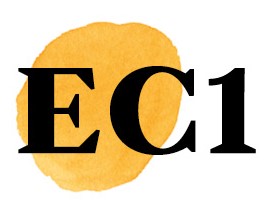In 1859 Charles Dickens began a new novel, penning one of the most famous beginnings in literary history.
By Jordan Evans-Hill

This is the first in an occasional series, exploring the legacy of Charles Dickens. Courtesy of the Charles Dickens museum.
In 1859 Charles Dickens began a new novel, penning one of the most famous beginnings in literary history.
It was the best of times, it was the worst of times, it was the age of wisdom, it was the age of foolishness, it was the epoch of belief, it was the epoch of incredulity, it was the season of Light, it was the season of Darkness, it was the spring of hope, it was the winter of despair, we had everything before us, we had nothing before us, we were all going direct to Heaven, we were all going direct the other way…
The enduring appeal of ‘A Tale of Two Cities’ is because this poetic contrast between hope and sorrow, opportunity and grim reality is so evocative of our own age. For many people, this is a time of deep concern. Stark social and political divisions, rapid technological advances and difficult pressures on everyday life have created an air of instability and uncertainty in our country and our community.
All of these themes would be recognised by Charles Dickens. Throughout his literary career Dickens was witness to huge changes in society caused by industrialisation, political unrest and social divisions. During his lifetime famines and food shortages broke out across Europe, most infamously in Ireland. The expansion and worsening of slum conditions in towns and cities across the UK contributed to a sense that poverty was getting worse. This, in turn, gave rise to various political movements in Britain and around the world, through philosophies such as Chartism, socialism, communism and nationalism. Revolutions were a relatively common feature in Europe throughout the 19th century. In London, Dickens was aware of and acquainted with European revolutionaries. Technological advances were transforming the way people lived, worked, ate and dressed, yet the benefits of these changes were all too often enjoyed by the rich, while the adverse effects of these transformations were borne by the poor.
‘A Tale of Two Cities’ is a work of historical fiction, being set during the French Revolution. Yet it is also a reflection on Victorian society in the 1850s. Dickens warns us that neglecting those most in need is a pathway to revolution. The realities of revolution, all too often, is suffering and hardship. By the end of the novel, the rattle of the guillotine is heard by all; rich and poor, old and young. As with so many of his stories, ‘A Tale of Two Cities’ is an example of Dickens desperately trying to force his readers to pay attention to those who are marginalised. It is a lesson which stays with us today. Sometimes it can feel as though we are in the worst of times. An age of foolishness, incredulity, darkness and despair. But there are also reasons to be hopeful; people in our lives and communities who reach out to help others. It’s a reminder that our future is in our own hands, in the actions we take, and in the way we decide to treat one another. Our age can be one of wisdom and belief, of light and hope, if we allow more kindness and compassion into our lives, and encourage others to do the same.
To quote from another of Dickens’s stories, ‘Our Mutual Friend,’ “No one is useless in this world… who lightens the burden of it for anyone else.”









